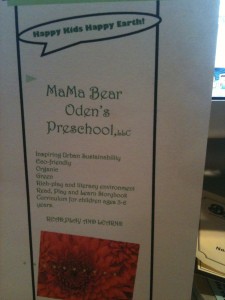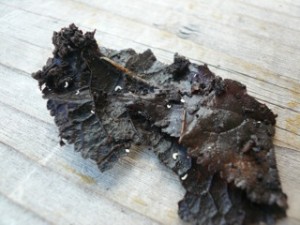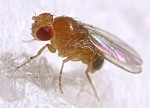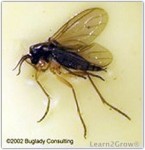by Wonder Worman | Feb 17, 2011 | Out and About, Resources
 I Love NYC! The energy, the people, the culture, the movement, the history, the noise, the architecture ……amazing! I grew up on Long Island and as a child would visit the city often. Our field trips involved train rides to see plays and visit museums. We didn’t have gadgets to keep us occupied. We had our friends! The excitement of the city kept us talking on the outbound ride, and the sheer exhaustion from all the sights and the clickety clack of the train lulled us to sleep on the ride home! I consider myself lucky to have experienced NYC as a kid and even luckier that I have the opportunity to return every summer.
I Love NYC! The energy, the people, the culture, the movement, the history, the noise, the architecture ……amazing! I grew up on Long Island and as a child would visit the city often. Our field trips involved train rides to see plays and visit museums. We didn’t have gadgets to keep us occupied. We had our friends! The excitement of the city kept us talking on the outbound ride, and the sheer exhaustion from all the sights and the clickety clack of the train lulled us to sleep on the ride home! I consider myself lucky to have experienced NYC as a kid and even luckier that I have the opportunity to return every summer.
At least once a week, I visit NYC via the web. I look at web cams, visit the museums, check out plays, and look for something interesting! Today while searching, I found the Brooklyn Bridge Park, a park working towards sustainability. They feed their trees and shrubs organically, and are also working on creating composting areas as the park grows. I am guessing the green trash can is used for collecting compostable waste, such as banana peels or apple cores.
As they are updating existing structures on the park grounds, they are saving most of the material. This material is then reused and transformed into another structure. Maybe it is turned into a park bench where someone can sit for hours admiring the city’s skyline! I hope to plop my behind on one of those benches and admire the urban environment!
So Brooklyn Bridge Park, if you are looking for a die hard New Yorker and one that loves Red Wigglers, give me a shout on the Worm Hotline. I’ll recognize the area code, and will answer in a worm beat!
by Wonder Worman | Feb 16, 2011 | Out and About, Red Wiggler World
 A pound of my super composting Red Wigglers is now in MaMa Bear Oden’s hands! Mrs. Oden is the proud, happy owner of MaMa Bear Oden’s Preschool in Bend. Vermiculture is just one of the school’s highlights. The preschool inspires the children to make healthy, earth loving choices with MaMa Bear’s guidance. These learning centers are valuable, and I applaud MaMa Bear!
A pound of my super composting Red Wigglers is now in MaMa Bear Oden’s hands! Mrs. Oden is the proud, happy owner of MaMa Bear Oden’s Preschool in Bend. Vermiculture is just one of the school’s highlights. The preschool inspires the children to make healthy, earth loving choices with MaMa Bear’s guidance. These learning centers are valuable, and I applaud MaMa Bear!
Some of the school’s features include:
•non-toxic cleaners
•reducing, reusing and recycling
•no waste Arts and Crafts center
•daily walks to the community playground
•organic garden
Role modeling earth loving choices will create healthy kids and a healthy planet!
by Wonder Worman | Jan 24, 2011 | Red Wiggler World
 See the white specks on the decomposing leaf? They are mites. Mites are part of the decomposition cycle and are also members of a worm bin, too. They will not harm the Red Wigglers as long as there isn’t an explosion in their population. Mites feed on decaying matter and are usually found on the surface but may go deeper depending on where the food is located.
See the white specks on the decomposing leaf? They are mites. Mites are part of the decomposition cycle and are also members of a worm bin, too. They will not harm the Red Wigglers as long as there isn’t an explosion in their population. Mites feed on decaying matter and are usually found on the surface but may go deeper depending on where the food is located.
Cause: Typically an explosion is a result of too much food and possibly too much moisture. This usually occurs on the surface where the food scraps are placed. If there is an explosion in the mite population, the Red Wigglers will avoid the food and move to another area in the bin. I usually see an explosion of mites when I put in too many cantaloupe rinds. The Red Wigglers can’t handle the amount of scraps and the mites take over. If that happens, then the Red Wigglers will not be able to get the food and may starve.
Treatment: If there are too many mites in your bin, then you’ll want to make some changes. I suggest doing one or maybe all of these ideas.
1) Remove the food source where the explosion is occurring. Usually it will be covered in mites to the point where you can barely see the food. I would toss it into your yard or bury it.
2) Remove the top few inches of bedding. Sometimes the mites are covering the top of the bedding.
3) Leave the bin open and expose it to light. This will help dry out the surface. Mites do not like a dry area. The sun light will also help to control the mite’s population.
4) Add some dry newspaper to absorb the excess moisture.
5) Stop feeding for a week. Freeze any food scraps that you are producing in the meantime.
Happy Wormin’
by Wonder Worman | Jan 19, 2011 | Red Wiggler World
-

-
This looks icky to us, but the worms will eat this even though it is a citrus fruit!
-

-
Fuzzy, wuzzy, moldy, woldy, strawberry
These moldy fruits look very nasty and if eaten could make you feel pretty nasty, too! Mold springs up in damp places like your basement, bathroom and even on your food. These spores are airborne and find that perfect, damp place to multiply. In the case of composting, they like to feed on the decaying food scraps. The strawberry and ortaniques above are infested with different forms of mold. When you find moldy fruits and veggies in your fridge or on your counter top, you can feed these to your Red Wigglers. Normally, I don’t feed my Red Wigglers copious amounts of citrus fruits. When the fruits develop mold, the wigglers with eat the fruit. The mold must change the chemical make up of the fruit…acidic to sweetic! lol… I have seen a lot of Red Wigglers all over lemons and oranges once the mold has set in!
If you have mold developing in your bin (on the top layer of the composting food),there could be a few things going on in the bin….
1) You could be feeding your worms too much and may need to back off until they have eaten what is left. In the meantime, freeze any scraps that you are producing.
2) Your bin could be to wet so add more shredded newspaper.
3) Bury the food so new air borne spores won’t attack the food.
4) Remove the moldy food if there is a nasty smell…..You’ll know…blah!
There really isn’t a threat to they worms, but may bother people with mold allergies. Mold is another decomposer that is present in the decomposition cycle.
by Wonder Worman | Jan 18, 2011 | Red Wiggler World
-

-
A fruit fly has red eyes and it’s body is a yellow orange color.
-

-
Adult fungus gnat is black and smaller than a fruit fly
Both the fruit fly and fungus gnat are rather annoying to me, and unfortunately they are part of the composting system. They are attracted to decomposing and rotting food. So if you are composting with or without worms, you are going to attract these creatures. The upside to these winged creatures is their short life span. Many sites claim they live for a day to a week depending on the temperature and the availability of food. They do reproduce quickly if food is around for them to feast on so it may seem that they live forever. Also, the warmer the weather, the longer the life span and the more they reproduce. The opposite is true for the cooler weather.
Sign: The mantra buzzing around is “Everything in moderation”. This is true for the fruit fly and fungus gnat. You don’t want a herd of these creatures. For example, if you were to open the bin and a swarm rushes out to you and tries to get up your nose and in your mouth, then things need to change in the bin. They are just giving you a sign that you are producing more food scraps than the wigglers can handle. So the decomposing food is very appealing to the wigged creatures, and they will begin to lay their eggs in the food and the wet bedding. A swarm like this will deter your wigglers from coming to the surface to feed on the food scraps.
Solution: There are a few things you can do to rid yourself of a majority of these guys. Once again a few won’t harm your wigglers. and are actually speeding up the composting process. They are more of a nuisance to us, but if you have a swarm try one or all of these methods.
– stop feeding for a week or until the wigglers consume what is left in the bin. In the meantime, the scraps that you are producing can be stored in the freezer.
– burry the food scraps in the bedding so the flies can’t get to them.
– cover the bedding with extra sheets of newspaper.
– add some peat moss, or shredded paper to absorb any extra moisture.
– put the bin outside, over night ,exposed to cooler temperatures.
– buy fly paper
– put some fruit juice with a bit of soap in a bottle. The flies will go in and die….so sorry
Happy wormin’
Here’s where I got some info on the fruit fly and the fungus gnat.
 I Love NYC! The energy, the people, the culture, the movement, the history, the noise, the architecture ……amazing! I grew up on Long Island and as a child would visit the city often. Our field trips involved train rides to see plays and visit museums. We didn’t have gadgets to keep us occupied. We had our friends! The excitement of the city kept us talking on the outbound ride, and the sheer exhaustion from all the sights and the clickety clack of the train lulled us to sleep on the ride home! I consider myself lucky to have experienced NYC as a kid and even luckier that I have the opportunity to return every summer.
I Love NYC! The energy, the people, the culture, the movement, the history, the noise, the architecture ……amazing! I grew up on Long Island and as a child would visit the city often. Our field trips involved train rides to see plays and visit museums. We didn’t have gadgets to keep us occupied. We had our friends! The excitement of the city kept us talking on the outbound ride, and the sheer exhaustion from all the sights and the clickety clack of the train lulled us to sleep on the ride home! I consider myself lucky to have experienced NYC as a kid and even luckier that I have the opportunity to return every summer.






